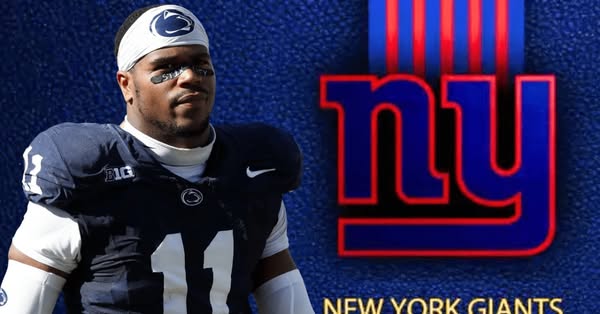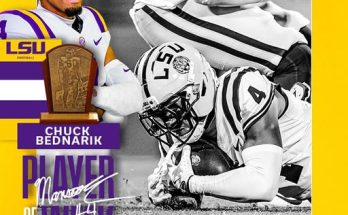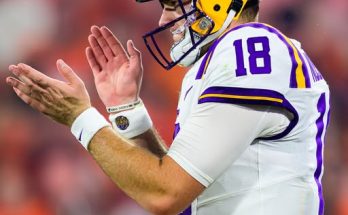When fans talk about college football dynasties and powerhouses, they often look at tradition, coaching trees, championships, and recruiting pipelines. But what truly breathes life into a program’s resurgence—or its ongoing dominance—is leadership from within, specifically from the quarterback and the coach. In the case of Ole Miss football, there is a growing sense that the Rebels may have found a perfect pairing that could define their success over the coming seasons. This pairing, still early in its journey but already showing signs of something special, is made up of Lane Kiffin’s offensive wizardry and the steady, ascending leadership of quarterback Jaxson Dart, now complemented by the immense talent and promise of receiver sensation Ayden Williams and linebacker anchor Suntarine Perkins. However, it is Dart’s continued rise and the arrival of defensive standout Walter Carter that now has insiders buzzing about a dynamic duo that could anchor both sides of the ball and lift Ole Miss into consistent contender status. Carter and Dart—different sides of the same competitive coin—are poised to lead the team into a promising future that Rebels fans are beginning to believe might be closer than previously imagined.
Jaxson Dart didn’t arrive at Ole Miss as an unknown. Transferring from USC, Dart carried the weight of expectations that come with playing for a storied program like the Trojans. The transition wasn’t seamless, but it was necessary. At Ole Miss, he found the space to grow without the spotlight glaring quite as intensely and a head coach in Kiffin who could refine his skillset in an offense tailored to unleash his strengths. Dart has improved in every meaningful category since his first year in Oxford—decision-making, pocket presence, footwork, deep ball accuracy. The development isn’t just statistical. It’s also emotional and psychological. He’s grown into the team’s leader, someone teammates respect and rally around.
Dart’s leadership, in many ways, is emblematic of what Lane Kiffin has wanted to build at Ole Miss: a program that can play fast, adapt quickly, and outthink opponents while maintaining a cultural toughness. Kiffin’s offenses are notorious for being unpredictable and explosive. That’s a high bar for any quarterback to meet. Dart has not only met it, he’s molded it to his personality. No longer just a former blue-chip recruit looking for a fresh start, Dart is now a general on the field who understands the intricacies of Kiffin’s playbook and the psychology of his teammates.
Yet even as Dart ascends as a leader of the offense, Ole Miss fans are looking to the future, and on the other side of the ball, they may have found their defensive counterpart in Walter Carter. Hailing from the talent-rich state of Alabama, Carter’s decision to join the Rebels was a statement of intent. Here was a blue-chip defensive lineman choosing to be part of a rising program rather than signing with one of the more established SEC powerhouses. His arrival brought immediate credibility and excitement to the defensive unit.
What makes Carter such an intriguing figure in the narrative of Ole Miss’s resurgence is how his play style and approach mirror Dart’s in many ways. Carter is an explosive, high-motor player who thrives in chaos. He disrupts blocking schemes, eats up double teams, and creates opportunities for linebackers and edge rushers. Much like Dart’s ability to extend plays and turn broken situations into first downs, Carter is a chaos agent on defense who can shift the momentum with a single tackle for loss or quarterback pressure.
Where Dart commands the huddle and orchestrates drives, Carter’s leadership is felt through raw intensity, a physical presence that forces opposing offenses to account for him on every snap. The idea that Ole Miss could have these two leaders—one offensive, one defensive—maturing together and pushing the ceiling of what this team can accomplish is intoxicating for a fan base hungry for postseason glory.
And it’s not just about their individual talents. The chemistry that’s starting to develop across this team—between offense and defense, veterans and newcomers—is tangible. Dart and Carter, while not directly involved in the same in-game conversations or meetings, share a competitive DNA. Both are gym rats. Both are known for being the first to arrive and the last to leave. Both command respect not because they demand it, but because they’ve earned it through consistent, selfless effort.
Ole Miss’s recruiting over the last few seasons has been trending upward, but star players alone don’t create championship teams. Culture does. And culture is best enforced by the team’s leaders—not the coaches, not the athletic department, but the players who sweat and bleed together every day. Dart and Carter represent different aspects of that culture, but together, they are creating a balanced identity for the Rebels—one that blends high-octane offense with disruptive, hard-nosed defense.
Consider what this means for the program’s future. For the first time in years, Ole Miss isn’t just hoping to be competitive in the SEC West—they’re expecting to be. The Rebels know they have a quarterback who can go toe-to-toe with the likes of Alabama, Georgia, and LSU. They know they have a young core on defense, led by Carter, that can actually get off the field on third downs. And they know they have a coaching staff capable of outscheming opponents. All of this sets the stage for something unprecedented in Oxford: sustained, year-in, year-out relevance at the highest level of college football.
This rise isn’t happening in a vacuum. The SEC is evolving. With Texas and Oklahoma joining the conference and traditional powerhouses going through transitions—whether at quarterback, coaching, or scheme—there is a small but real window for teams like Ole Miss to climb the ladder. Dart and Carter are the anchors of that climb. Dart, now one of the more seasoned quarterbacks in the conference, has the experience and poise that comes from taking SEC hits and making SEC throws. Carter, though younger, brings an energy and hunger that the defensive side of the ball desperately needed. Together, they balance youth and experience, explosiveness and stability.
This symbiosis is not lost on Kiffin, who has always been quick to adapt his strategies to the players he has rather than forcing players to fit into a rigid system. With Dart, he’s opened the playbook in creative ways—using tempo, motion, and downfield shots to stretch defenses. With Carter, the staff is building schemes that leverage his quick first step and leverage ability, often putting him in stunts and hybrid formations that confuse blocking assignments.
The development of these two stars is also impacting recruiting. High school prospects and transfer portal targets are taking notice of what’s happening in Oxford. Recruits aren’t just looking for exposure or NIL money anymore—they want to be part of something real, something ascending. The visibility of Dart and Carter as cornerstone players helps sell that vision. It tells defensive backs that there’s a front seven worth joining. It tells offensive linemen and receivers that there’s a quarterback who can win big games and lead productive drives. It tells everyone that Ole Miss is not just a stepping stone, but a destination.
Fans are noticing, too. Attendance is up. The buzz on campus is palpable. Students and alumni alike are dreaming bigger. Not just bowl games, but New Year’s Six games. Not just ranked seasons, but legitimate top-10 campaigns. That kind of hope doesn’t come from media hype or preseason magazines. It comes from what you see on Saturdays: a quarterback and a defensive star giving it everything they’ve got for 60 minutes, every single week.
The challenges ahead are real. The SEC remains the most grueling conference in college football. Injuries will happen. Slumps are inevitable. But Dart and Carter offer something that can’t be coached: resiliency. Dart has fought through the noise of being a transfer quarterback, the expectations of playing in the SEC, and the grind of an unpredictable schedule. Carter is already showing signs that he won’t just be another athletic defensive tackle—he’s going to be the type of player who changes games, changes schemes, and changes outcomes.
The true beauty of this duo is that their stories are still being written. Dart is entering what may be his final collegiate season, poised to leave a legacy at Ole Miss that could define this new era of Rebel football. Carter, meanwhile, is just beginning. If his trajectory holds, he could become the defensive face of the team for years to come, an anchor around which future teams are built.
What binds them—what makes them a “dynamic duo” in the purest sense—isn’t just complementary talent, but a shared vision. They are both committed to elevating the standard at Ole Miss. They understand that leadership isn’t a title, it’s an action. It’s showing up when it’s inconvenient. It’s holding teammates accountable. It’s making the throw on third and long. It’s taking on the double team so someone else gets the sack. It’s doing the hard thing because that’s what it takes to win.
In that sense, the story of Carter and Dart is about more than just football. It’s about how leadership evolves, how culture is built from the ground up, and how belief can take root when the right people step into the spotlight. This isn’t just a quarterback and a defensive lineman playing their roles. This is a quarterback who commands respect and a defensive stalwart who demands excellence.
Together, they are reshaping what it means to play for Ole Miss. And if early signs are any indication, they might just lead the Rebels to a golden era that fans have long hoped for—but only now are beginning to truly believe is possible. Their dynamic leadership, complemented by an ambitious coaching staff and a supportive community, could forge the kind of legacy that’s remembered for generations—not just for wins and losses, but for how they changed the game in Oxford forever.



